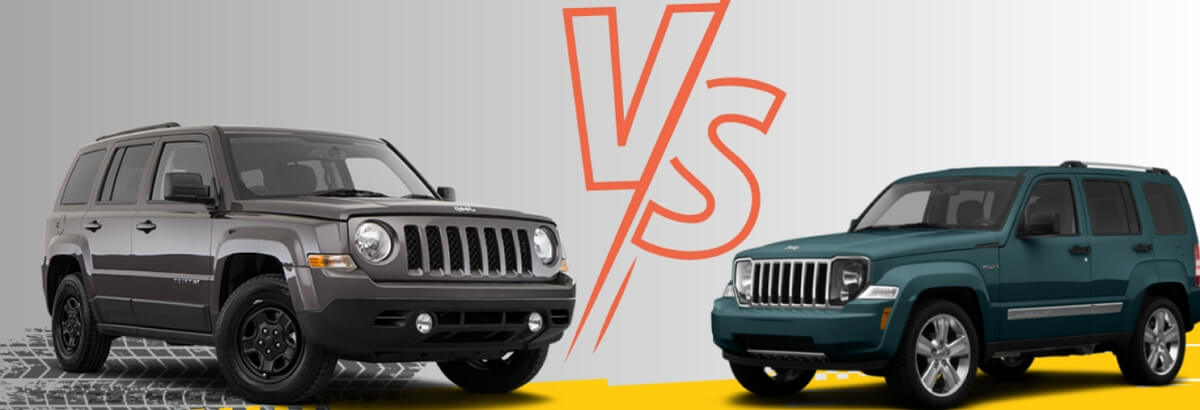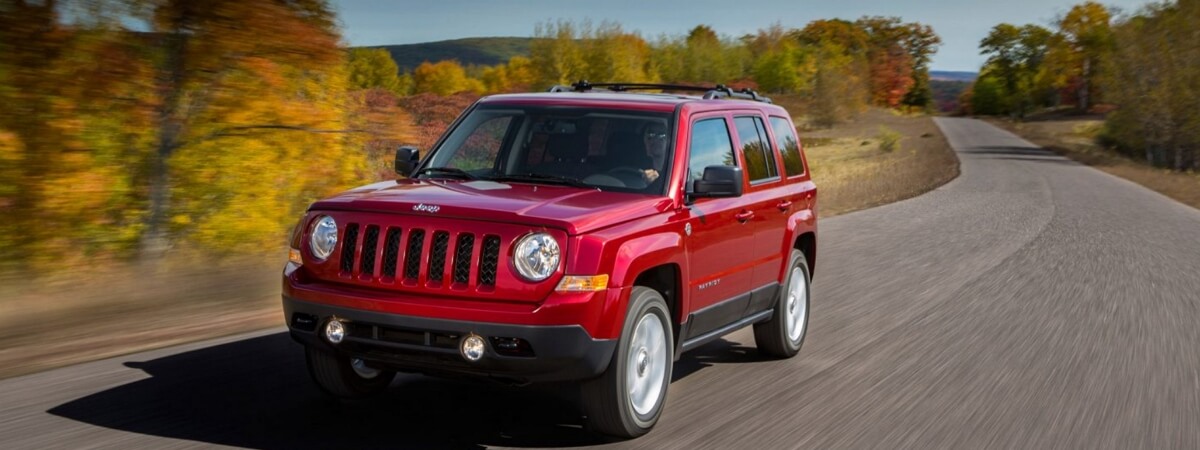
When it comes to hitting the road or the trails with confidence and style, Jeep has covered you with two exceptional compact SUVs: the Liberty and the Patriot. Both are champions of the Jeep legacy, each packed with the power and poise perfect for solo adventurers and families. Deciding between the two can be tough, but we’ve got the lowdown on what makes each model tick so you can pick the one that’s right for your lifestyle.

Products are available — click below to view them!
SEE DETAILS ON EBAYJeep Liberty: The Off-Road Connoisseur’s Choice
The Jeep Liberty doesn’t just promise adventure; it delivers it with a side of comfort. It’s the compact SUV that’s as ready for the daily commute as it is for a spontaneous road trip into the wild.
Body Style
- 2002-2007 Liberty: Started with a rounded look, echoing the classic Cherokee vibes.
- 2008-2012 Liberty: Got a makeover with a more rugged, squared-off look without losing its distinctive Jeep charm.
Powertrain
- Engines: Offers a variety between a 2.4L four-cylinder, a mighty 3.7L V6, and even a 2.8L turbodiesel for some models.
- Transmission: Comes with a choice of a four-speed automatic or a hands-on six-speed manual.
- Drive Configuration: Standard rear-wheel drive with an available all-wheel drive option for those who crave that extra traction.
- Suspension: Front independent suspension on all-wheel-drive models and a solid live axle at the rear, giving you a blend of modern comfort and old-school Jeep durability.
Interior Design
Ergonomic design with quality materials and features like rear reclining seats, designed to keep you cozy on those long drives. Some models come with Sirius® satellite radio and the MyGig® entertainment system, packing a punch with a hard drive and surround sound system.
Jeep Patriot: The Versatile Road Companion

Landing a spot on CarMax’s Top 10 SUVs of 2016 list, the Jeep Patriot is as versatile as they come, ready for anything from city driving to off-grid escapades.
Body Style
- Pre-2011 Patriot. Classic Jeep styling with a squared-off design and the iconic grille.
- 2011-2017 Patriot. Received a stylish update with paint-matched bumpers and refined lines, plus the special Altitude edition for an extra dash of elegance.
Powertrain
- Engines. A range of gas and diesel engines, with options including a 2L and 2.4L that keep the adventure going strong.
- Transmission. Choose from a five-speed manual or a smooth six-speed automatic for gasoline engines, with the diesels paired with a six-speed manual for that extra control.
- Towing Capacity. Pulls up to 1,000 pounds with the 2L engine and a beefy 2,000 pounds with the 2.4L.
Suspension
Independent suspension all around, including a multilink setup at the back and MacPherson struts up front, ensuring a ride that’s both responsive and comfortable.
Interior Design
Options range from cloth to leather, with the bonus of folding down passenger seats to haul large items – proving that comfort and utility can go hand-in-hand. Liftgate speakers and the Uconnect® system add to the Patriot’s party credentials, offering easy access to entertainment with both voice-activated and touchscreen controls.
Comparison Chart: Jeep Liberty vs. Jeep Patriot
| Feature | Jeep Liberty | Jeep Patriot |
|---|---|---|
| Body Style | Rugged and squared-off | Classic and versatile |
| Powertrain | 2.4L I4, 3.7L V6, 2.8L Diesel | 2.0L or 2.4L Gas/Diesel |
| Towing | – | Up to 2,000 lbs (2.4L) |
| Suspension | Independent Front (AWD) | Independent All-Around |
| Interior | Ergonomic with quality touch | Flexible and comfortable |
| Entertainment | Sirius® & MyGig® System | Uconnect® & Liftgate Speakers |
Now that you’ve got the scoop on what these two Jeep contenders bring, it’s all about what fits your bill. Are you the off-road enthusiast leaning towards the Liberty’s trail-ready build, or do you favor the Patriot’s all-rounder capabilities? Whichever you choose, you’re in for a ride that’s quintessentially Jeep – where the journey is just as important as the destination. Happy trails and smooth driving!
Why Compare the Jeep Liberty and Jeep Patriot?
The Jeep Liberty and Jeep Patriot often find themselves side by side in comparison for several compelling reasons. Despite their distinct timelines in Jeep’s production history, both have cultivated a loyal following and have become synonymous with the rugged, go-anywhere attitude that Jeep is celebrated for. Let’s dive into why these two are such common subjects of comparison.

Shared Jeep Heritage: First and foremost, both vehicles are born from the storied Jeep legacy, which brings with it a certain expectation for off-road prowess and reliability. They embody the Jeep ethos but manifest it in different forms. Those looking for a vehicle that honors this tradition while also providing utility for everyday use will inevitably end up comparing these two models. The Liberty, with its robust build, appeals to those who yearn for a traditional SUV experience. At the same time, the Patriot attracts drivers looking for a modern interpretation that doesn’t sacrifice the spirit of adventure.
Competing in the Compact SUV Market: Both the Liberty and Patriot are positioned in the highly competitive compact SUV segment, which has seen explosive growth due to the balanced offering of space, performance, and fuel efficiency. Within this arena, consumers often seek a vehicle that can do it all, and the Liberty and Patriot each pitch their tent in this camp, though they set up those tents in slightly different styles. This makes them natural competitors not just to each other but to any car shopper’s checklist that prioritizes versatility.
A Balance of On-Road Comfort and Off-Road Capability: These two SUVs are also frequently compared because they balance the comforts expected of a family car and the robust capabilities required for off-road adventures. The Liberty and Patriot offer features that cater to daily driving comfort, such as ergonomic interiors and entertainment options, while not shying away from challenging terrain—thanks to their respective four-wheel-drive systems and trail-rated badges. It’s this dual nature that makes both vehicles attractive to a wide demographic, from urban dwellers to outdoor enthusiasts.
In essence, when car buyers are hunting for a vehicle that can handle the rigors of daily life as effortlessly as it does the unpredictability of nature, the Jeep Liberty and Jeep Patriot naturally rise to the top of the list. Their consistent comparison is a testament to their shared strengths and the pivotal choice they represent for drivers who refuse to be confined to the pavement.







